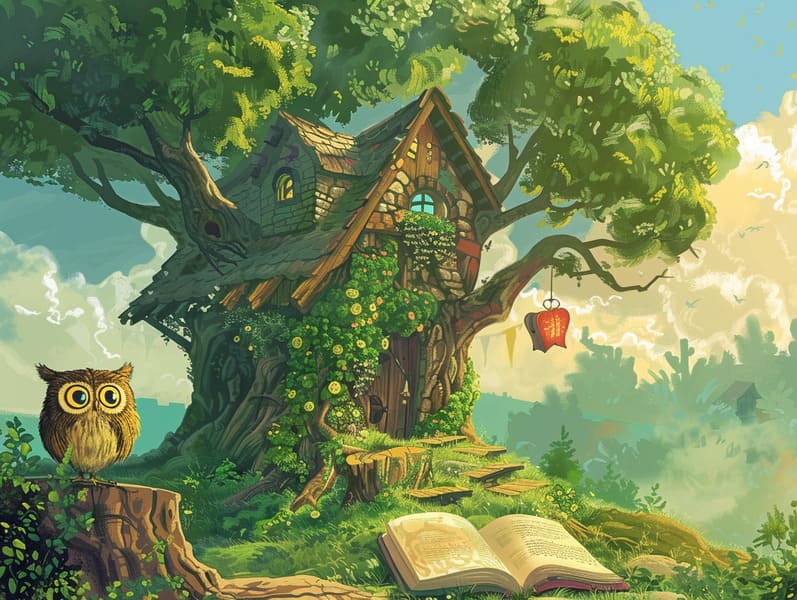
Timeless fairy tales have timeless appeal. These stories have been whispered from one generation to the next far before they were ever transcribed. They were born from a variety of societies, including Western traditions. They were initially told among older generations, often carrying themes and messages relevant to the societal norms and beliefs of the time.
The Brothers Grimm, Jacob and Wilhelm, were among the first to collect many of these beloved stories. Their volume, "Grimm's Story Collection," included classics like "The Little Glass Slipper," "Hansel and Grethel," and "Schneewittchen," which have since become cornerstones in the world of traditional fairy tales. Similarly, Hans Andersen's fanciful narratives, such as "The Story of the Little Mermaid," and "The Duckling that Could," have enchanted hearts worldwide, ensuring their place in the pantheon of beloved fairy tales.
Despite being ancient, fairy tales remain as applicable as ever, especially as children's night stories. These fantastical tales are now available in different formats, including vibrantly illustrated books, whimsical animations, and internet fairy tales.
Their continued relevance can be ascribed to several whimsical characteristics:
Key Lessons: Old fairy tales often whisper important moral lessons. Tales like "The Wolf and the Liar" teach the importance of truth, while "The Tortoise and the Hare" highlight the values of tenacity and humility. These narratives offer children clear distinctions between correct and incorrect, forming their moral compass in a kind yet profound way.
Kindness and Comprehension: Traditional fairy tales frequently feature heroes facing problems and hurdles, motivating audiences to connect with their struggles and cheer for their triumphs. For instance, "Beauty and the Beast" teaches us the significance of looking beyond appearances to comprehend the inner being of a being, promoting awareness and understanding.
Cultural Insights: Many classic fairy tales are rich in the cultural contexts from which they came. Understanding these narratives can provide captivating looks into different traditions, advancing a sense of global understanding and knowledge.
Inventiveness and Imagination: The whimsical elements in traditional fairy tales—enchanted objects—revitalize children’s creativity. These stories carry readers to otherworldly realms, firing up imaginative dreams and a sense of enchantment that lasts a lifetime.
Ancient fairy tales are not only fascinating but also pedagogical. They work as delightful tools in strengthening various mind and heart abilities in young ones. When fairy tales are voiced, they advance speech development by offering new language items and complicated sentence structures. This practice also develops hearing abilities and concentration, as the young remain attentive, keen to see what happens next.
Furthermore, conversing about the themes and characters of old fairy tales can enhance evaluative skills and critical thinking. The young are led to recognize patterns, forecast, and understand cause and effect. These deliberations also facilitate young ones reveal their thoughts and feelings, cultivating their emotional intelligence.
In today’s technological era, the availability of digital storybooks has made these narratives more within reach than ever. Internet sites and mobile apps feature extensive collections of bedtime fairy tales that can be browsed or heard anytime, anywhere. Fairy tales spoken are particularly widespread, making available an charming way for young ones to delight in these charming tales. Voice books and spoken videos bring characters and settings to life, often enhanced by mesmerizing audio effects and music that enrich the tale journey.
The timeless allure of traditional fairy tales lies in their ability to transform to new eras while retaining their main lessons. Contemporary reinterpretations of these tales often introduce more different characters and modern settings, making them relatable to today’s audience. However, the core values of guts, kindness, and honesty remain unchanged, continuing to resonate with kids of all ages.
Old fairy tales also offer a sense of solace and homeliness. They showcase a well-ordered narrative with a straightforward beginning, middle, and end, often finishing with the termination of conflicts and the triumph of justice over injustice. This predictability can be consoling for little ones, gifting a sense of reliability in an shifting world.
Old fairy tales continue to charm and inform new generations, maintaining their spell these guys and meaningfulness in modern society. As kids' bedtime tales, they provide a perfect blend of fantasy and learning, developing moral values, empathy, and creativity. The proliferation of online fairy tales and the popularity of fairy tales told out loud assure that these classic stories remain within reach to new generations.
By keeping and making known these narratives, we continue to glorify the rich tapestry of cultural heritage and cultural heritage. Whether you are delving into a vividly illustrated book, browsing a online collection, or playing an spoken story, the allure of ancient fairy tales is always within reach. These tales demonstrate of the steadfast power of stories and its ability to bond us across centuries and lands.
No matter if you are delving into a gorgeously illustrated book, seeing a cyber collection, or listening via an voice book, the allure of classic fairy tales is always within reach.
These fairy tales show us of the enduring power of storytelling and its ability to bind us across eras and regions, establishing a link that enchants and educates alike.